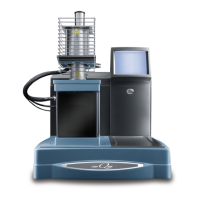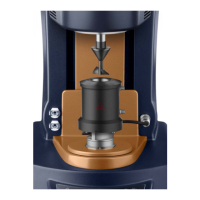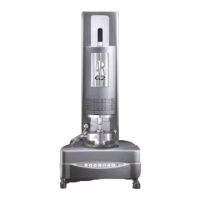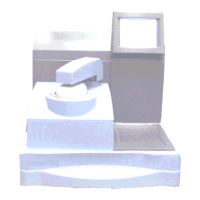Appendix B
B–10 TA I
NSTRUMENTS
TGA 2950
maximum specified in the ramp segment. The
resolution setting is a unitless number used to
select the most useful band of percent/minute
values for proportional heating rate control.
Higher resolution settings select lower percent/
minute values, and generally result in increased
resolution and longer experiment times. Lower
settings have the opposite effect.
Resolution settings may be selected anywhere in
the range of -8.0 to +8.0. Positive settings
indicate that dynamic rate mode is to be used
during the ramp. Negative settings indicate that
constant reaction rate mode is to be used. More
details on using each mode is covered in the
Advanced Hi-Res
TM
Techniques section.
Positive resolution settings are the most univer-
sally useful settings and the least likely to have
undesirable side effects. Although there are no
hard and fast rules about which resolution
setting to use for a given experiment, there are
some general guidelines which will be helpful.
It has already been stated that higher resolution
settings usually provide better resolution results
and lower settings the reverse. The closer the
setting is to zero the larger the derivative of
weight change (%/minute) must be for a reduc-
tion in heating rate to occur. In fact, a resolution
setting of exactly zero completely disables the
application of the Hi-Res
TM
technique, resulting
in a normal constant heating rate ramp at the
maximum rate specified.
A resolution setting of +1.0 will produce a TGA
scan at 50
°
C/minute that roughly approximates
the resolution obtained by a constant heating
rate scan at 20
°
C/minute. In other words, you

